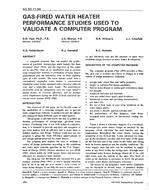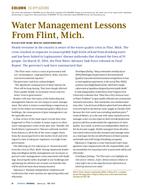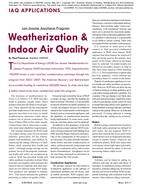Click here to purchase
The purpose of this work is to develop a mathematical multi-layer, multi-plume model of passive contaminant spread for office spaces equipped with displacement ventilation (DV) coupled with a personalized ventilation system (PV). The model studies the transport of species and therefore predicts occupant risk of infection in typical office spaces. The particle concentrations in the thermal plumes and the surrounding air are separately evaluated in each air layer in the space. The PV is taken into account in the occupant breathing zone and affects the species’ concentration in the rising thermal plume. The temperatures and concentrations at each layer are computed by solving the energy and mass balance equations. On the other hand, the temperature and concentration at the breathing zone are calculated by discretizing the PV jet into vertical control volumes and performing energy and mass balance at each PV layer. The model is then validated experimentally in a climatic chamber equipped with a DV+PV system and a heated cylinder representing an occupant in a typical office space. Validation of the model is performed for a DV flow rate of 60 L/s (127.13 CFM) and a supply temperature of 19°C (66.2°F) along with a typical PV flow rate of 3.5 L/s (7.41 CFM) and supply temperature of 22°C (71.6°F). Good agreement is obtained between measured and predicted values by the model with maximum errors of 7.44% for temperature and 4.47% for concentration found in the macroclimate air.Key-words: personalized ventilation, displacement ventilation, mathematical model, indoor air quality
Citation: 3rd Intl Conf: Efficient Bldg Design
Product Details
- Published:
- 2018
- Number of Pages:
- 10
- Units of Measure:
- Dual
- File Size:
- 1 file , 1.7 MB
- Product Code(s):
- D-ICEB18-C029


